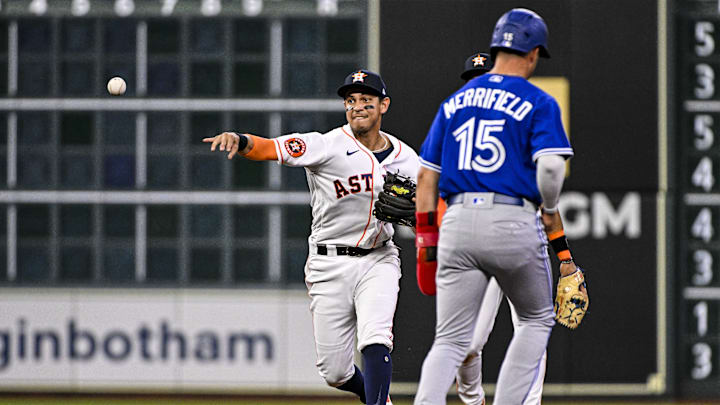A lot has been made of the Blue Jays' issues hitting with runners in scoring position, as they sit near the bottom of the league for most statistics in this area. But these issues can be extended beyond just runners in scoring position since when the Jays have someone on first this year, they've often fallen victim to one of the worst plays in baseball, the groundout double play (which will be referred to as GIDP from here on). As of writing this, the Blue Jays currently rank second in MLB and first in the AL with 100 GIDPs. So why exactly is this happening, and can it be fixed?
First, it would make sense to assume that high GIDP numbers would correlate with a high ground ball rate, but that's not necessarily the case. While the Miami Marlins, who lead MLB in GIDPs by a wide margin, also lead MLB in ground ball rate, the Blue Jays rank 18th in this stat, right behind the Baltimore Orioles, who have grounded into the least double plays in the AL. The actual correlation is between ground ball rate and GIDP rate. Despite ranking second in total GIDPs, the Jays actually rank 15th in MLB for GIDP rate, sitting right around the league average. The reason that they've grounded into so many total double plays is that their 944 opportunities for a GIDP (which baseball reference defines as a runner on first with less than two outs) are 38 more than any other team in baseball. While this may make it seem like their GIDP problems aren't that bad, this is both true and false.
The Blue Jays GIDP rate certainly makes it appear as if it's not as big of an issue, but that's a bit of a red herring. For starters, it's clear that they aren't turning these runners on first with less than two outs into runs as consistently as they should, as their MLB-leading 7.31 runners left on base per game shows. The second part is the time at which these double plays are happening. The Jays currently have 10 GIDPs with the bases loaded which trails only the 33-85 Oakland A's in the American League. It's even worse if you look at their number with runners in scoring position as a whole, where they've grounded into an AL-leading 38 double plays. While the rates may not seem too bad, the quantity is absolutely killing the Jays.
So why does this keep happening, and can it be fixed? As for the why, it's impossible to give an exact answer, but it's likely some combination of a poor approach with runners on and bad luck. It isn't an isolated issue with just a couple batters, since five Blue Jays have double-digit GIDPs, so maybe it's an issue with the team's hitting philosophy as a whole. Hitting coach Guillermo Martínez has received a lot of criticism for things like this all season, and while he's likely not blameless for this particular problem, it would be ridiculous to put it all on him. It's also important to recognize this isn't a new issue. Last season Blue Jays led the AL in both total GIDPs and GIDP rate, but last season they also scored the fourth most runs in MLB, this season they rank 15th. The reality seems to be that this is just one of a number of issues that the Jays' offense has struggled with this season, and it's more likely that any offensive improvement stems from other areas. That isn't to say it's completely impossible that they get better, since their GIDP rate indicates that they've made improvements from last year, but you might not want to bank on this changing down the stretch.
